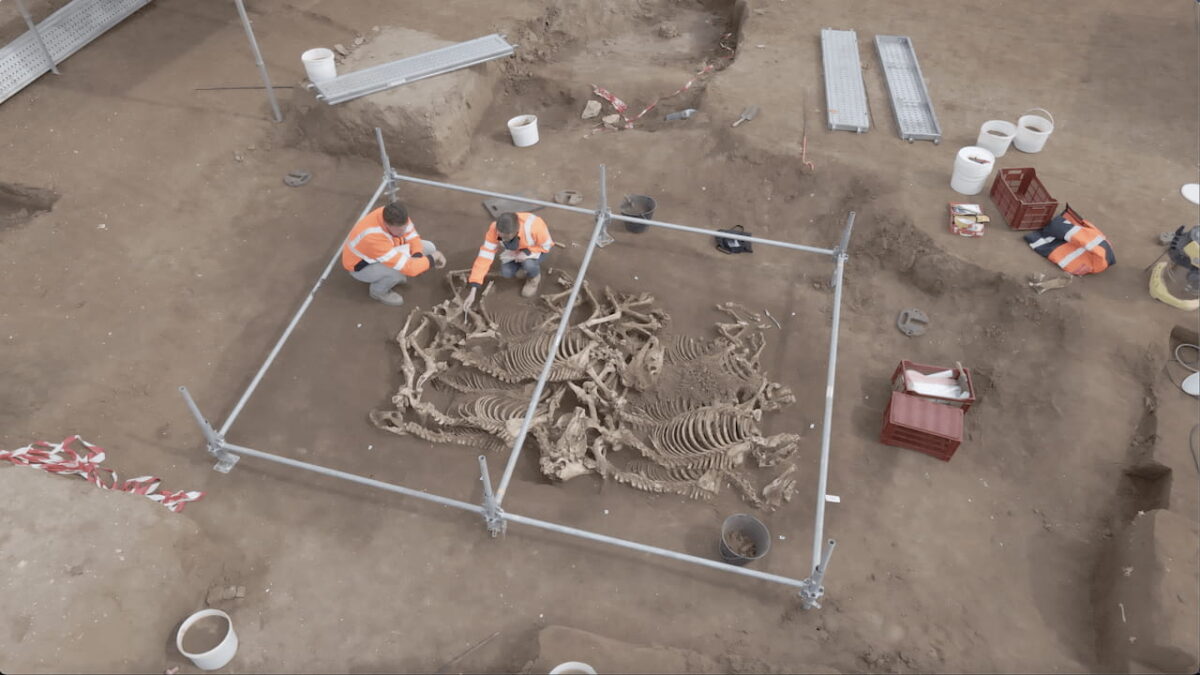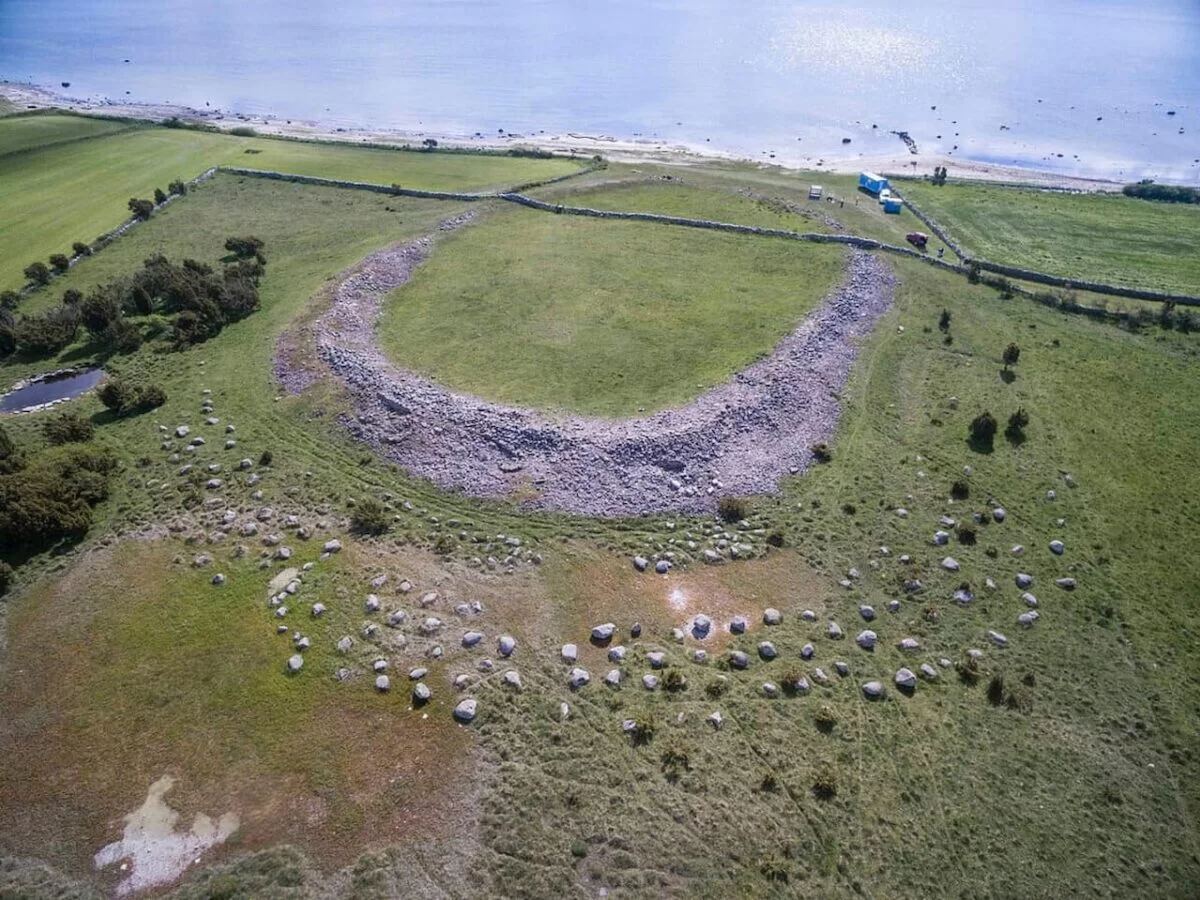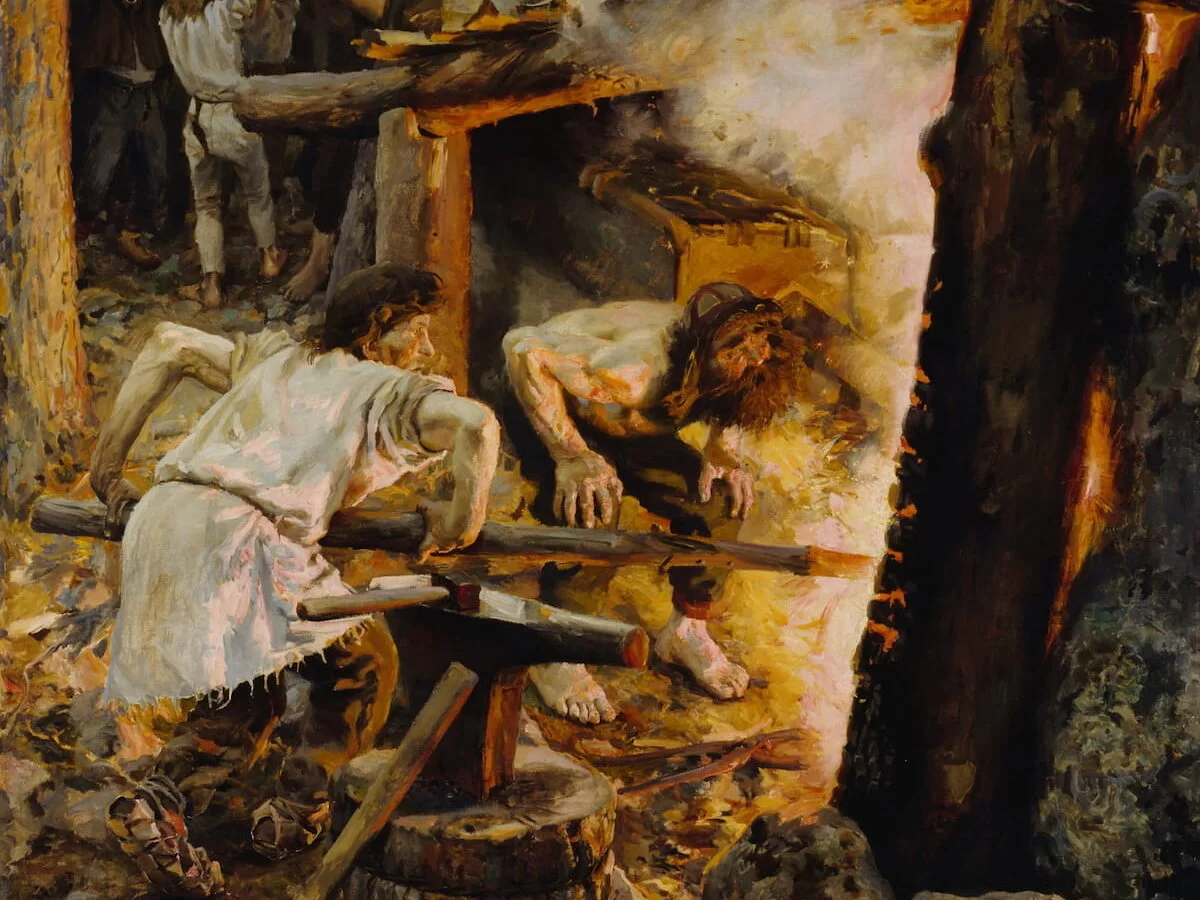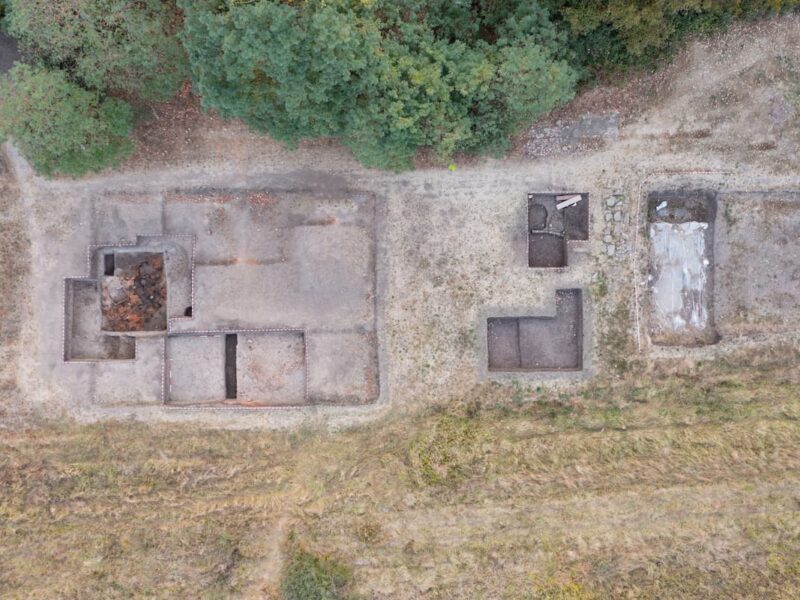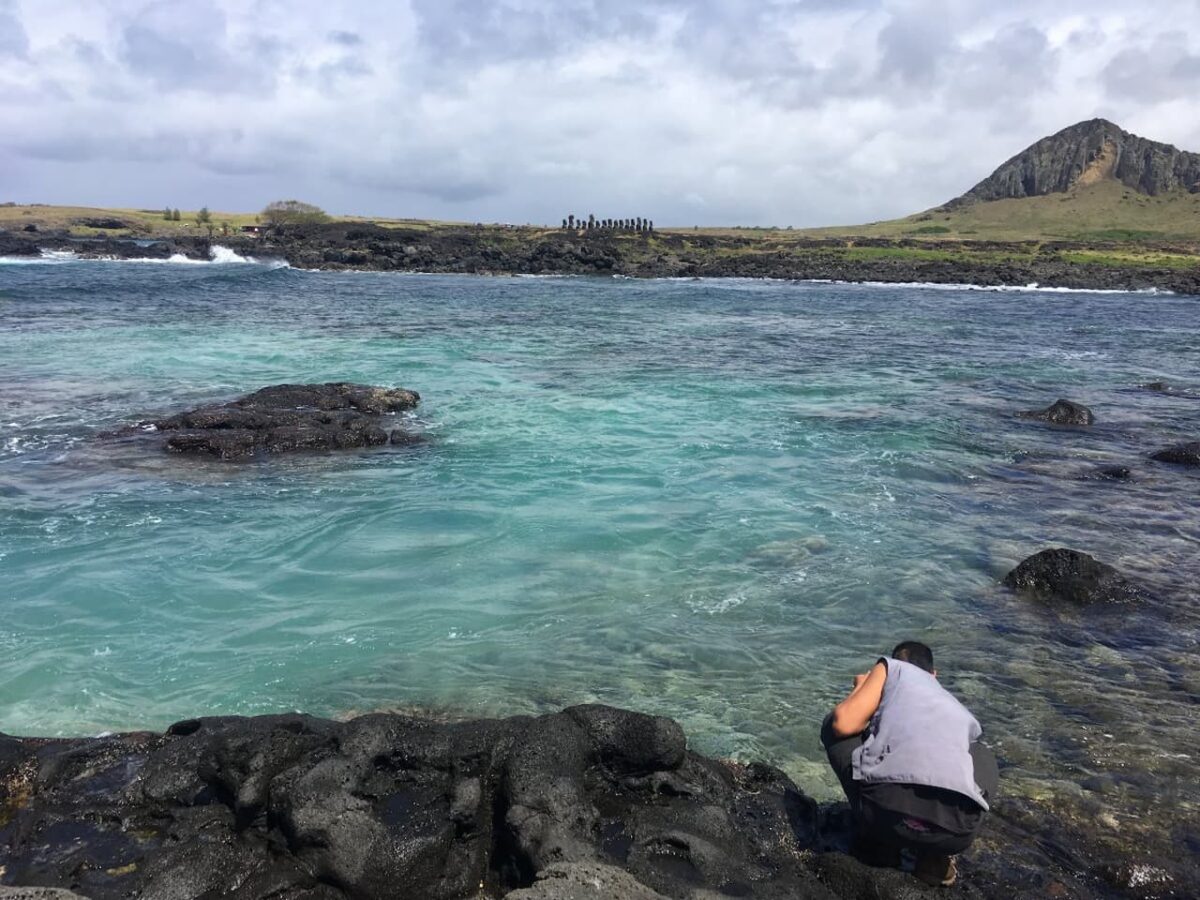The excavation of 1.3 hectares, located on the slope of a valley in Villedieu-sur-Indre in the center of France, has revealed a site dated to the late 5th and early 6th centuries. Numerous buildings, pits, ditches, and a high medieval road have been unearthed. In addition to the medieval occupation, nine pits containing horses have been discovered, dated by radiocarbon to the late Gallic period to the beginning of the Roman period (100 BC – 100 AD).
Today, only two pits are fully excavated. The first contains 10 complete horses. Lying on their right side, with their heads to the south, they have been carefully placed in the pit and arranged in two rows and two levels. The position of the bodies and bone connections show that they were buried simultaneously, very shortly after their death.
Archaeozoological observations reveal that these are small horses, 1.20 meters tall at the withers, characteristic of Gallic livestock. All are males and adults over 4 years old. The second pit, smaller, contains only two individuals, identical to the previous ones.

Between these two groups, another pit contains two medium-sized adult dogs, at least one of them male. Lying on their left side, with their heads to the west, they have also been carefully placed.
The excavation of other structures is ongoing, but remains of skulls and pelvic bones already appear on the surface: 28 horses have been identified to date.
An episode of an epidemic or epizootic affecting the livestock is ruled out as young animals and mares are missing. However, the cause of death, accidental or deliberate, has not yet been determined.
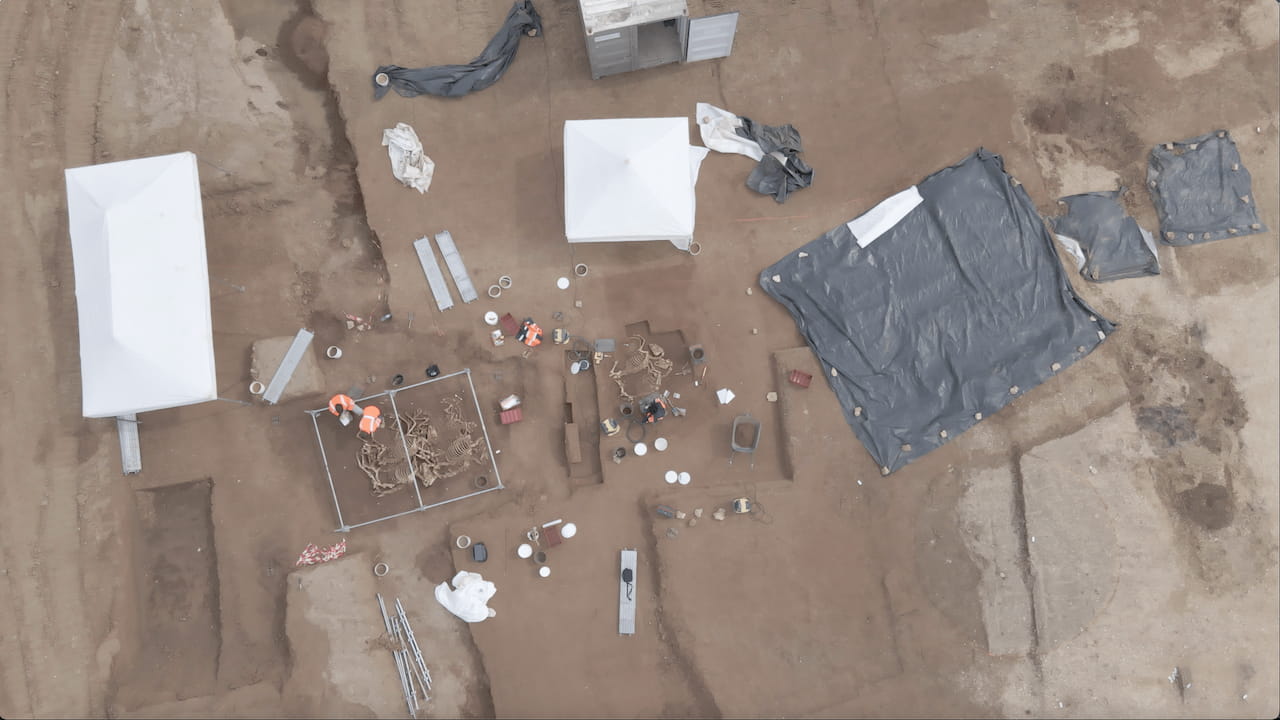
These horses buried in a spectacular staging recall the exceptional discoveries in Auvergne, in Gondole and l’Enfer, Gallic sites in the plain of Gergovia. In Gondole, one of the pits contained eight riders and their horses, while in l’Enfer, 53 horses alone were present in five pits.
In Villedieu-sur-Indre, as in the plain of Gergovia, the horse pits contain no furnishings and are not associated with any other structure. Furthermore, the three sites are a few hundred meters from an oppidum (Gergovia, Gondole, and Camp de César).
The geographical situation of Gergovia, the massive presence of adult male horses dated to the end of the Roman conquest, make the link between the burial of these horses and the battles of the Gallic Wars attractive. This hypothesis is also plausible in Villedieu-sur-Indre. The discovery of Roman sling bullets in the oppidum of Camp de César attests to a confrontation, forgotten by history, in the land of the Bituriges, which may have taken place before the famous siege of Avaricum (Bourges).
The hypothesis of animals sacrificed as part of a complex ritual, of which we only have some clues, must also be considered. The number of horses sacrificed constitutes a massive extraction from the heart of a herd. This heavy investment testifies to the importance of the sacrifice.
In Gondole, riders and horses buried at the foot of the oppidum could constitute voluntary sacrifices of soldurii, these warrior companions of a Celtic king who would kill themselves if he died a violent death (Caesar BG III, 22, 1-335).
The discoveries in Villedieu-sur-Indre today complete those made two decades ago in Auvergne and lead to a reconsideration of the religious or funerary practices of the late Iron Age and early Roman period.
Discover more from LBV Magazine English Edition
Subscribe to get the latest posts sent to your email.

